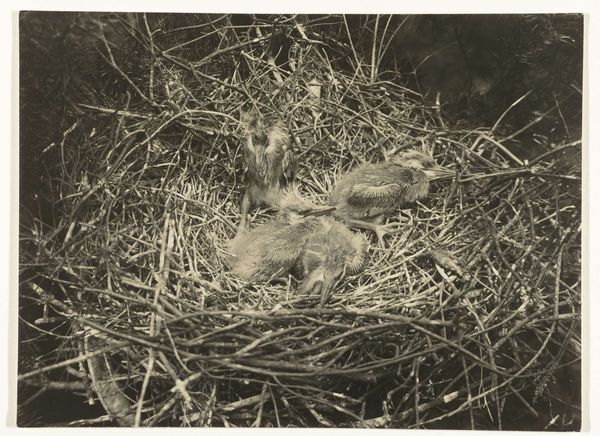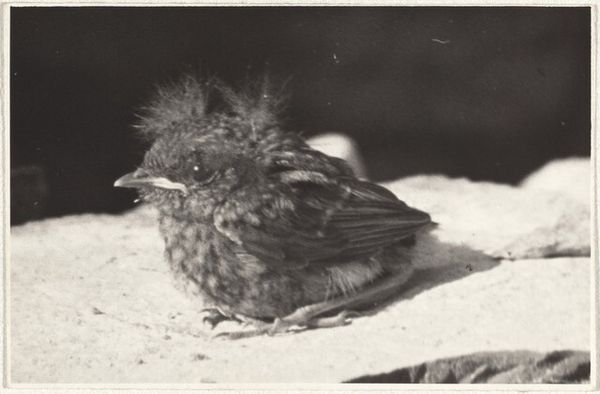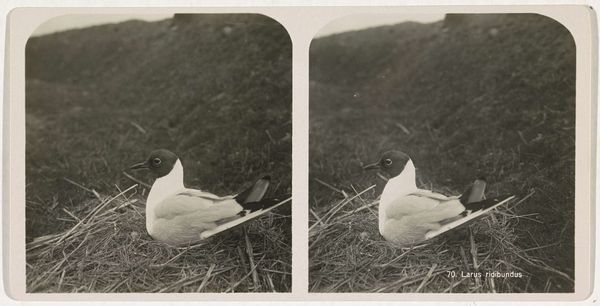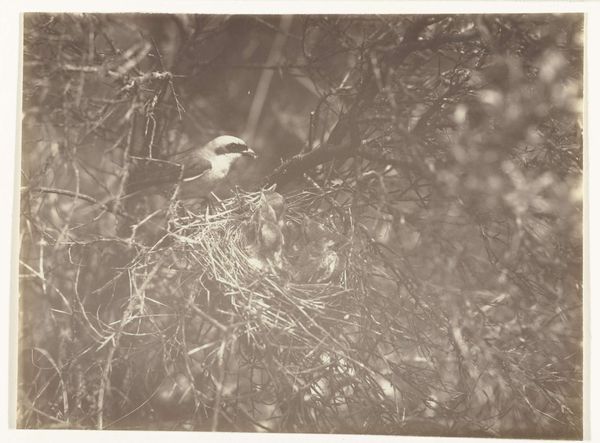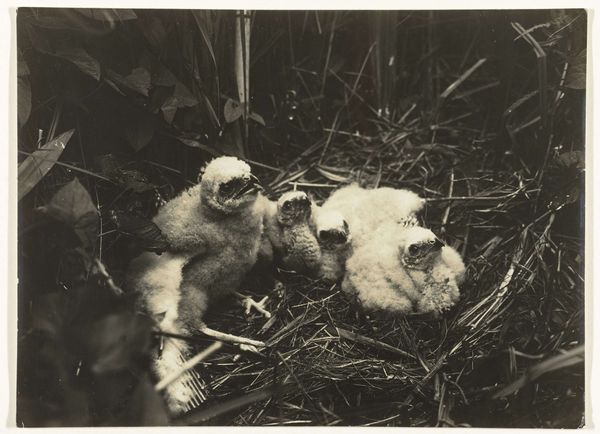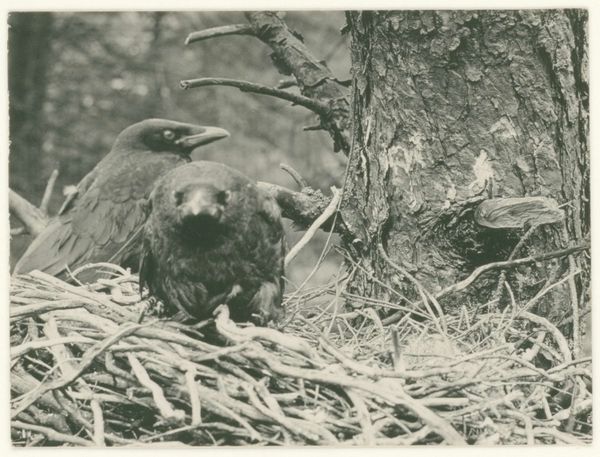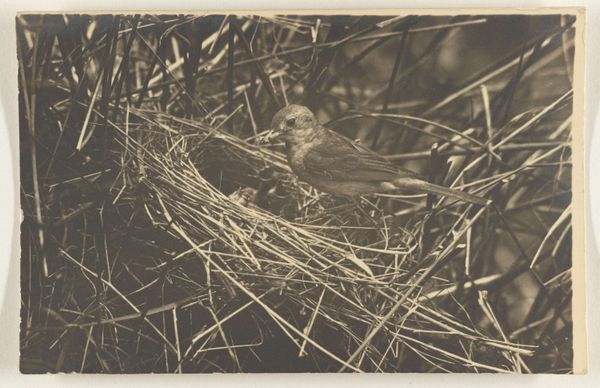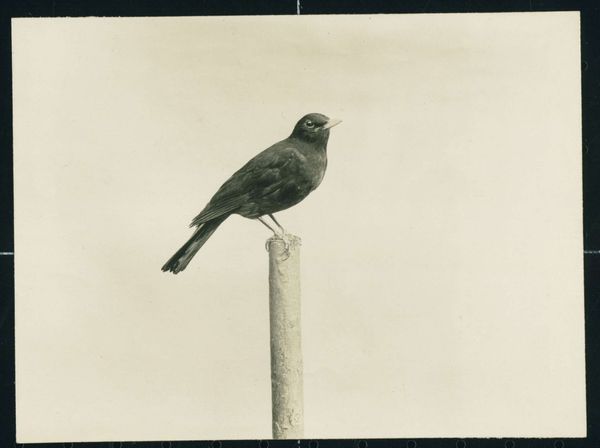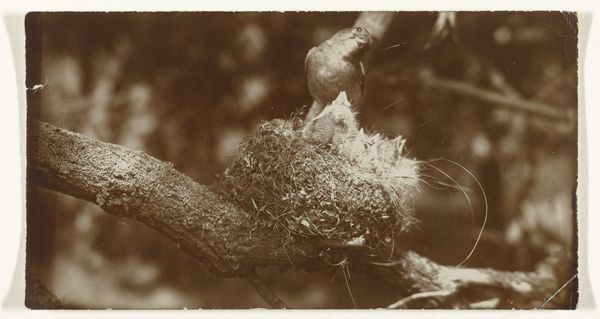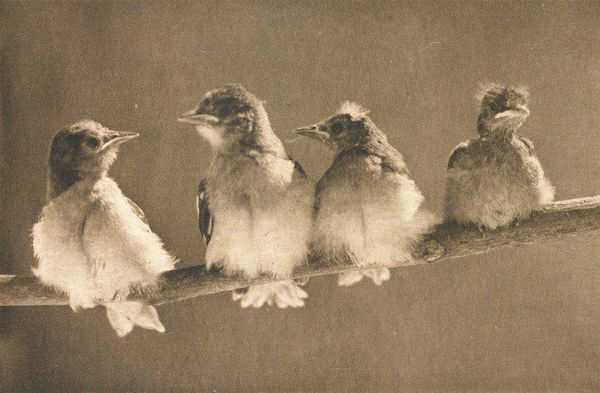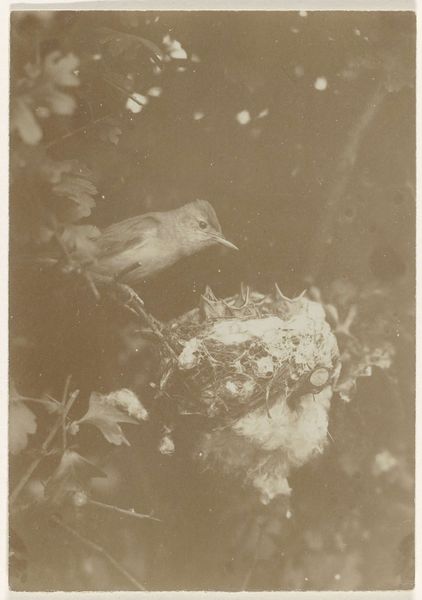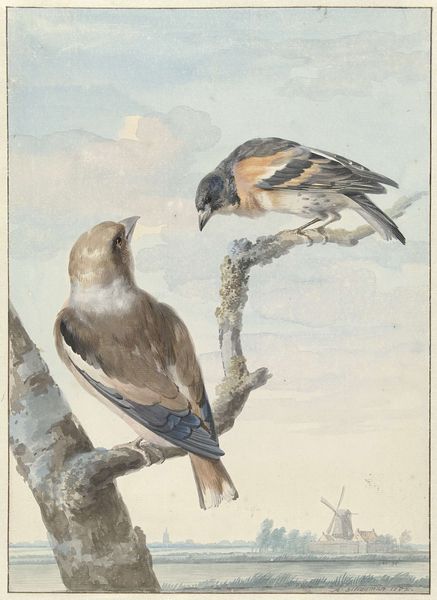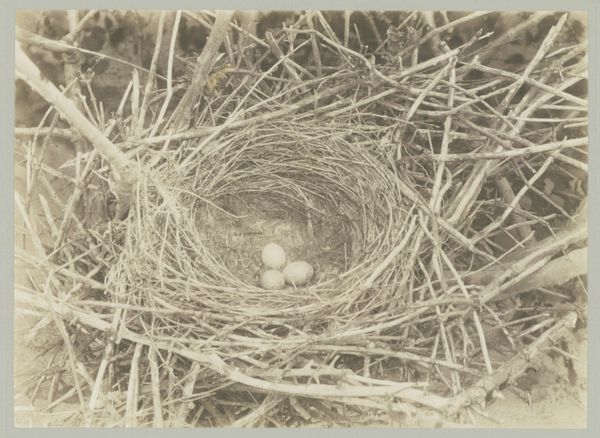
photography
#
still-life-photography
#
landscape
#
photography
#
charcoal
#
realism
Dimensions: height 115 mm, width 161 mm
Copyright: Rijks Museum: Open Domain
Editor: So, we have a photograph here, "Vogels op een nest," or "Birds on a Nest," taken sometime between 1900 and 1930 by Richard Tepe. It's a pretty straightforward image of two birds perched on their nest, but something about the textures of the nest itself, the way it was built, is really catching my eye. What's your take? Curator: The material quality of this photograph is crucial, and that means we have to consider what photography represented at that time. Realism was the prevailing movement, but photographers like Tepe were actively shaping what that meant through their practice and consumption of materials. Editor: Interesting. So you're not just looking at the birds and the nest, but the… photography of the birds and the nest? Curator: Precisely. The photograph’s monochrome palette speaks to the specific technologies available then, reflecting the very labour and processes required to fix this image. We can speculate as to the construction of the nest; material gathering, physical placement of clay, all tasks to be completed before considering it a home. Can we then extend that process-led thinking to the construction of the photograph? Editor: I think so! I'm imagining Tepe choosing his equipment, the plates he'd use... Even the darkroom process. Curator: Yes, exactly! It makes you think about his artistic choices with materiality, and how that translates the subject for us as viewers, right? Editor: Absolutely. I never considered how the material constraints of photography at that time were so intimately linked to the final artwork. Curator: Seeing it as an artifact born from specific technologies and conditions can really deepen our appreciation, can't it? Editor: Definitely! Now I'm curious about the other photographs Tepe made, to see how his material choices evolved!
Comments
No comments
Be the first to comment and join the conversation on the ultimate creative platform.
